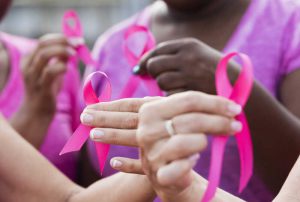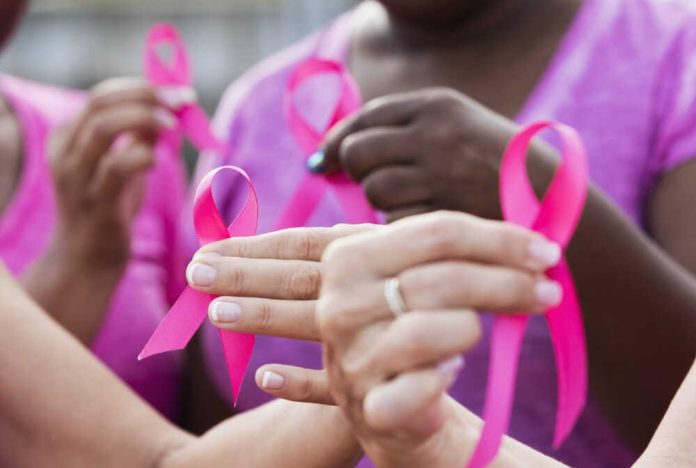
Alivia Welch
Managing Editor
According to the American Cancer Society (ACS), 1 in 8 women in the United States are diagnosed with breast cancer annually. However black women are 41 percent more likely to die from breast cancer than white women, despite lower incidence of the disease.
Katherine Bridges of Jackson, Miss. was diagnosed with breast cancer in 2008 after noticing a constant pain in her breast.
She said after ignoring the mild pain for a year, it was time to seek medical attention. Bridges said the following year her doctors confirmed it was indeed breast cancer.
“I kept feeling a sharp pain in my right breast and I kept ignoring it the first year because it was mild, but when I went to the doctor the following year, he confirmed that it was cancer,” said Bridges.
She continued, “My mother had five girls, my mother was a carrier and so she passed it down to all of her girls. I’m the baby, I’m the last one still living.”
There are four stages of breast cancer, Stage One, which is the most mild and proceeding to Stage Four, the most advanced. Bridges was diagnosed at Stage One.
“My doctor informed me that I was in the early stage. I was 45 when I was diagnosed and I’m 59 now,” Bridges stated.
Breast Cancer Prevention Partners (BCCP) reports that breast cancer affects more women than any other cancer and is the leading cause of cancer-related deaths globally. African-American women have the highest mortality rate of any U.S. racial or ethnic group.
Based on the patient and stage of breast cancer, medical professionals advise different treatment options and plans.
“I did six rounds of chemo first, then I did surgery and then I did four more rounds of chemo,” said Bridges. “I did all of that in a year-long duration.”
Bridges said due to her diagnosis and family history, it was recommended by her doctor to have a double mastectomy. She also said after her procedure she received breast implants.
A mastectomy, according ACS, is breast cancer surgery that removes the entire
breast. A mastectomy might be done:
When a woman cannot be treated with breast-conserving surgery (lumpectomy), which saves most of the breast.
If a woman chooses mastectomy over breast-conserving surgery for personal reasons.
For women at very high risk of getting a second breast cancer who sometimes choose to have a double mastectomy (the removal of both breasts).
Johnkeria Pete, a senior journalism and media studies major from Greenville, Miss., shared her family’s experience with breast cancer.
“My grandmother was diagnosed in her 50’s with breast cancer in the left breast,” said Pete.
Pete also stated that she knows the importance of self-examinations because of her family’s medical history and how it can help detect breast cancer in the earlier stages.
“I know my mother always tells me do a self-breast exam daily, which requires me to feel my breast and other parts of my body,” she said.
A report by Yale Medicine found that women who are younger than 45 make up 11 percent of the women who are diagnosed with breast cancer. Dr. Liva Andrejeva-Wright, who practices in breast imaging and breast oncology, said she has diagnosed woman in their 20s with breast cancer. With Pete’s knowledge of breast cancer, she advises younger women to self examine their breasts and know their family’s medical history.

“Early detection can potentially save your life, so doing self-breast exams and regular checkups can help,” she said.
The United States Preventive Services Task Force (USPSTF) recommends women ages 50 to 74 get a mammogram every two years and women ages 40 to 49 should weigh the benefits and risks when deciding whether they should begin getting mammograms.
“I receive a mammogram every year because cancer in general runs in my family,” said Kathy Ford, a registered nurse from Terry, Miss.
According to the Centers of Disease Control (CDC), in the United States approximately 264,000 women are diagnosed with breast cancer yearly and 42,000 will die after diagnosis. Ford insists that self-examinations and mammograms are the best way to detect and diagnose breast cancer.
“I do monthly self-breast examinations. I also try to stay in tune with my body and look for any abnormalities,” Ford said.
Each year, thousands line up at the Mississippi State Capitol for a run/walk to raise funds and awareness for breast cancer. Making Strides Against Breast Cancer of Central Mississippi and the American Cancer Society of Mississippi host the annual event.
This year the event will take place on Oct. 27 in Jackson, Miss. between 8 a.m. and 11 a.m. Contact the American Cancer Society of Mississippi at 1-800-227-2345 for more information.

